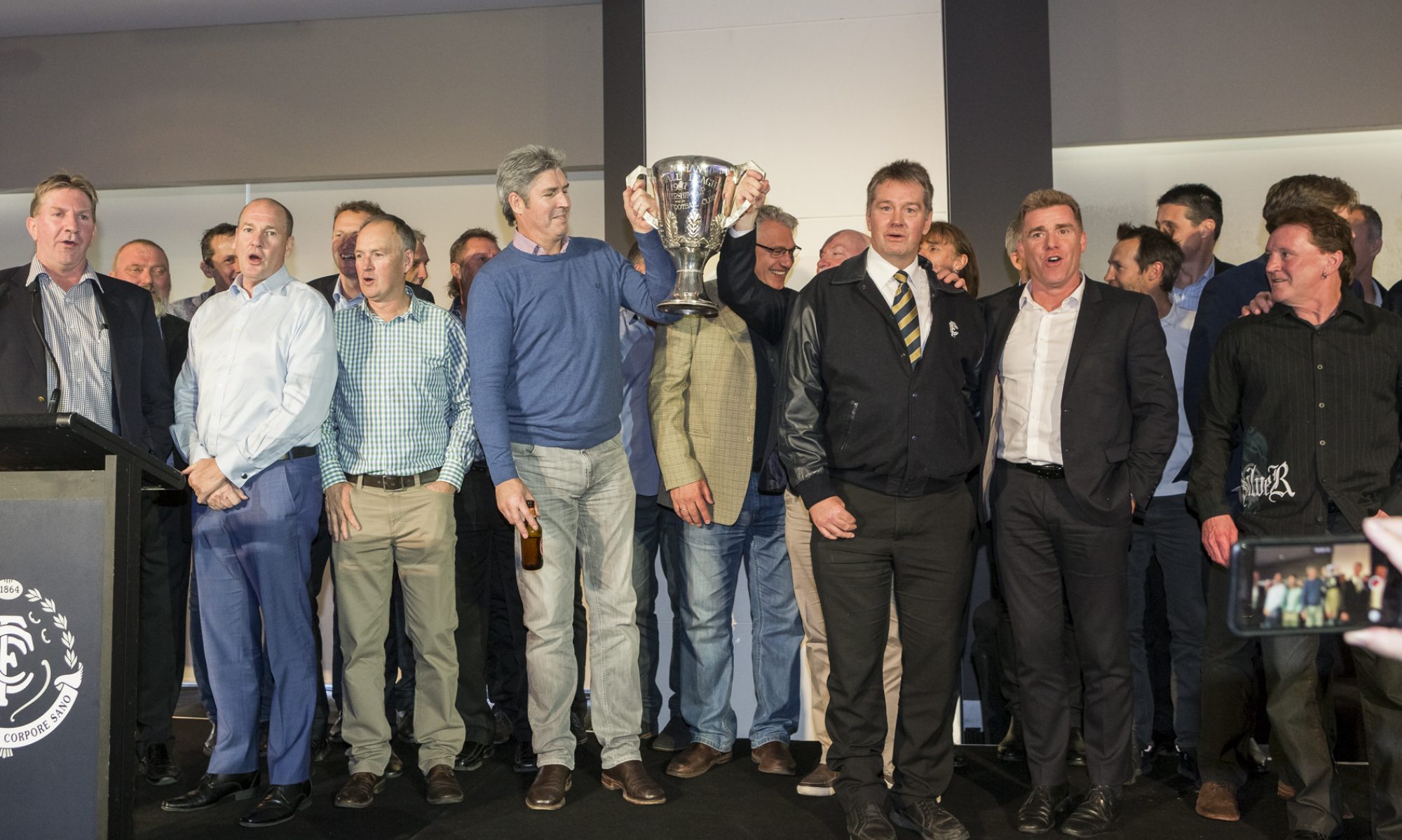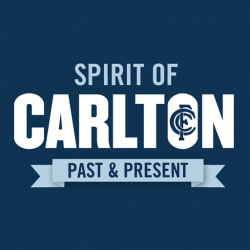Shane Robertson 1990 – Latest Video
David Rhys-Jones 1990 – Latest Video
Tim Rieniets 1990 – Latest Video
Brett Ratten 1990 – Latest Video
Andrew Phillips 1990 – Latest Video
Luke O’Sullivan 1990 – Latest Video
Mark Naley 1990 – Latest Video
Fraser Murphy 1990 – Latest Video
Simon Minton-Connell 1990 – Latest Video
Paul Meldrum 1990 – Latest Video
Andrew McKinnon 1990 – Latest Video
Warren McKenzie 1990 – Latest Video
Ashley Matthews 1990 – Latest Video
Mark Majerczak 1990 – Latest Video
Justin Madden 1990 – Latest Video
Anthony Loone 1990 – Latest Video
Stephen Kernahan 1990 – Latest Video
“You barrack like hell”: Former Blue Strauch reflects on Jenna’s Olympic silver
Former Blue Dean Strauch is happy to be greeted as “Jenna Strauch’s old man”.
By Tony De Bolfo

DEAN Strauch holds close to his heart his four years and five senior appearances in the dark Navy Blue guernsey through the late 1980s.
But since the events of last weekend, the former Carlton half-forward is only too happy to be greeted as “Jenna Strauch’s old man” – having witnessed first-hand his daughter win Olympic silver after swimming the breaststroke leg of the women’s 4x100m medley relay.
Strauch, together with his wife Jane, son Tom and Jenna’s Brisbane-based boyfriend also named Tom, watched on from the Paris Olympic Acquatic Centre’s stands, as Jenna and fellow team members Kaylee McKeown, Emma McKeon and Mollie O’Callaghan earned silver as runner-up to the record-breaking Americans in the final on day nine of the Paris 2024 Olympic Games (4 August).
“What we experienced as parents we’ll never experience again,” said Strauch, a day after returning from an unforgettable three-week European sojourn.

“We were there at poolside, it was nerve-wracking watching on, the adrenalin was running and you just barrack like hell. We were also there for the medal presentation, and we were able to get a photo with Jenna posing with her medal.”
Recruited to Carlton from Golden Square in Bendigo, where his late father Neville for years served as the Blues’ recruiting coordinator, Strauch earned the reserve grade’s best first-year player award in 1986. Breaking into the senior in Round 17 of that season against Essendon at the MCG, the then 20 year-old first wore the guernsey No.51 on his back, and later Rod Ashman’s 14 until his time at Princes Park ended in the final home and away contest of 1989, versus Brisbane at Carrara.
Such is Strauch’s empathy for his old club that he was aboard a Melbourne-bound train from Bendigo for Friday’s Spirit Of Carlton’s Legends Luncheon as a guest of his old teammate Michael Gallagher, when he conveyed his Parisian experiences over the phone.

“The Olympics is the ultimate for athletes at that level, and for my daughter to walk away with a medal is just a great thing. It’s been a long time coming, from when I relocated to Melbourne with my wife and two boys to support her in the opportunity she had to swim and further her career,” Strauch said.
“We told her that if she wanted to do it we’d facilitate it, that we’d be around to encourage her and to pick up the pieces with the lows – and we always said to her ‘if you work hard you’ll get the rewards’.”
Strauch’s unforgettable three weeks included a pre-Olympic catch-up with his sister who lives and works in Bendigo. During that period, Strauch’s other son Ryan managed the family’s plumbing business back in Bendigo, reflecting the level of commitment it takes from many to realise an Olympic dream.

